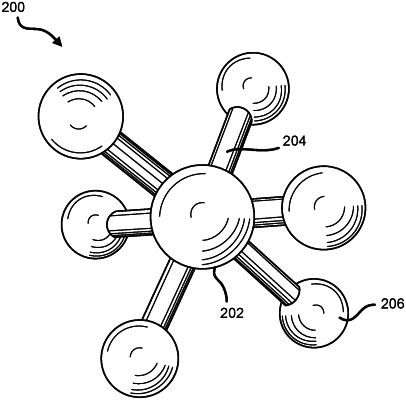| CPC A61B 34/20 (2016.02) [A61B 5/065 (2013.01); A61B 8/0841 (2013.01); A61B 8/085 (2013.01); A61B 8/4254 (2013.01); A61B 8/46 (2013.01); A61B 8/463 (2013.01); A61B 8/481 (2013.01); A61B 17/3211 (2013.01); A61B 90/39 (2016.02); G06T 7/70 (2017.01); A61B 5/14503 (2013.01); A61B 5/4842 (2013.01); A61B 8/0825 (2013.01); A61B 2017/00867 (2013.01); A61B 2017/00964 (2013.01); A61B 2018/00595 (2013.01); A61B 2034/2063 (2016.02); A61B 2034/2065 (2016.02); A61B 34/25 (2016.02); A61B 2090/378 (2016.02); A61B 2090/3904 (2016.02); A61B 2090/3908 (2016.02); A61B 2090/3912 (2016.02); A61B 2090/3925 (2016.02); A61B 2090/395 (2016.02); A61B 2090/3995 (2016.02); G06T 2207/10132 (2013.01); G06T 2207/20081 (2013.01); G06T 2207/30096 (2013.01); G06T 2207/30204 (2013.01)] | 20 Claims |

|
1. A system for ultrasound localization, the system comprising:
a marker comprising a central core formed from a first material and at least a first layer formed from a second material at least partially surrounding the central core, wherein the first material has a higher echogenicity than the second material, wherein the marker is configured to be implanted within an interior of a patient;
an ultrasound probe comprising an ultrasonic transducer, the ultrasonic transducer configured to emit ultrasonic sound waves and detect reflected ultrasonic sound waves;
a display;
at least one processor operatively connected to the ultrasound probe; and
memory, operatively connected to the at least one processor, storing instructions that when executed by the at least one processor perform a set of operations comprising:
generating first image data from first reflected ultrasonic sound waves reflected from the at least the first layer of the marker when implanted proximate a lesion within the interior of the patient when the ultrasound probe is at a first position;
analyzing the generated first image data to identify the marker within the interior of the patient;
generating second image data from second reflected ultrasonic sound waves reflected from within the interior of the patient when the ultrasound probe is at a second position;
analyzing the generated second image data to determine the marker is not present within the generated second image data;
generating a navigation indicator, wherein the navigation indicator indicates a direction of the marker relative to the second position of the ultrasound probe;
displaying the navigation indicator on the display with an ultrasound image generated from the second image data;
based at least in part on the identification of the marker, determining a distance to at least one of the marker or the lesion from the ultrasound probe in the second position; and
displaying the determined distance to the at least one of the marker or the lesion on the display.
|